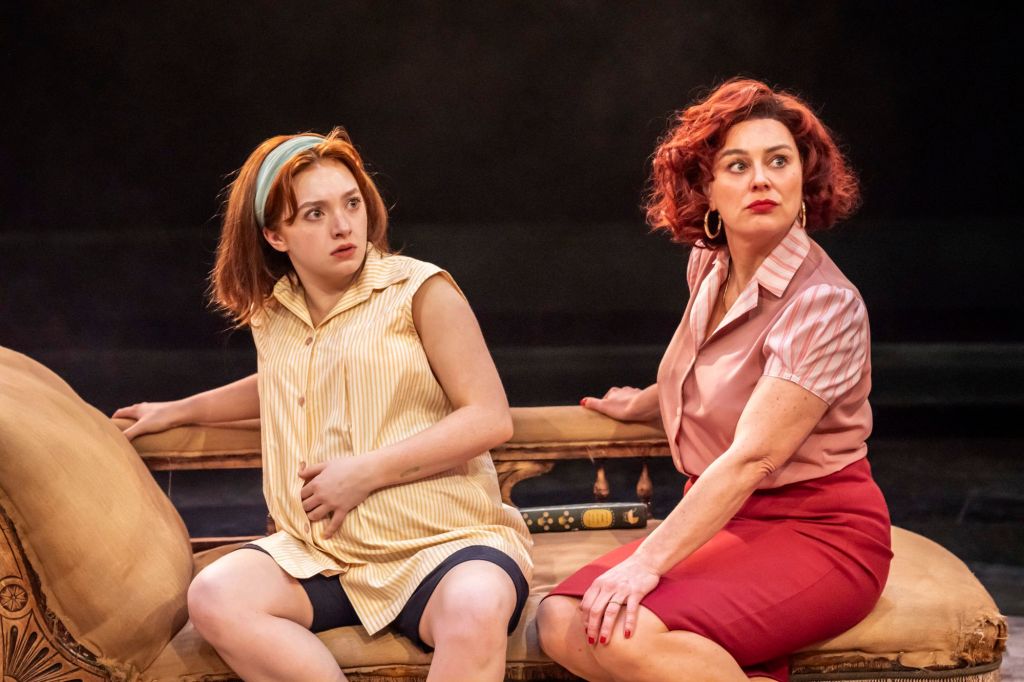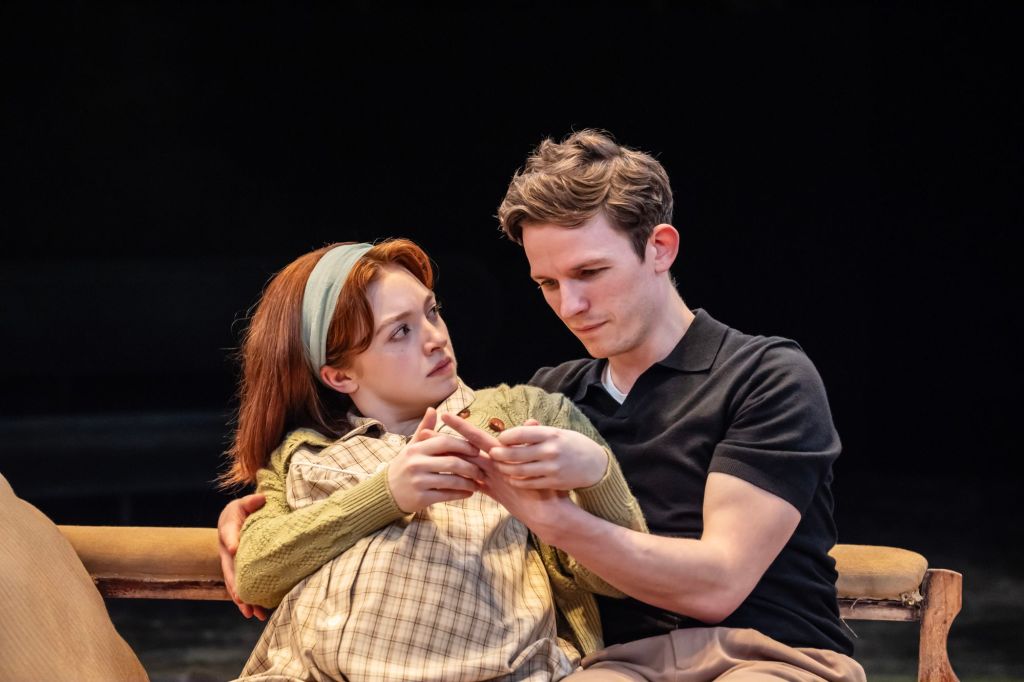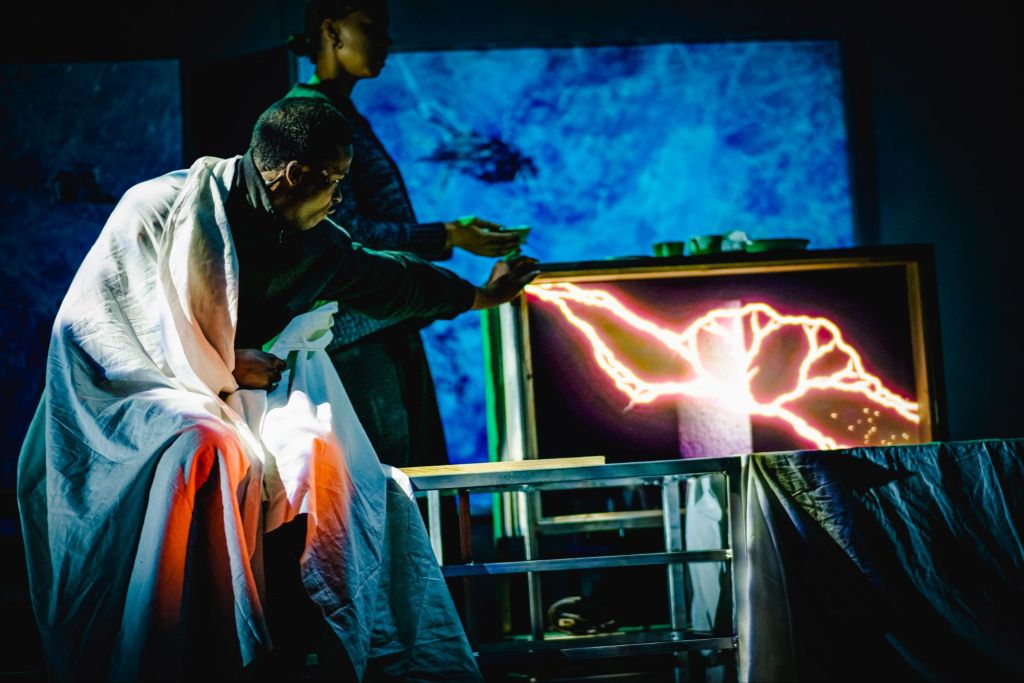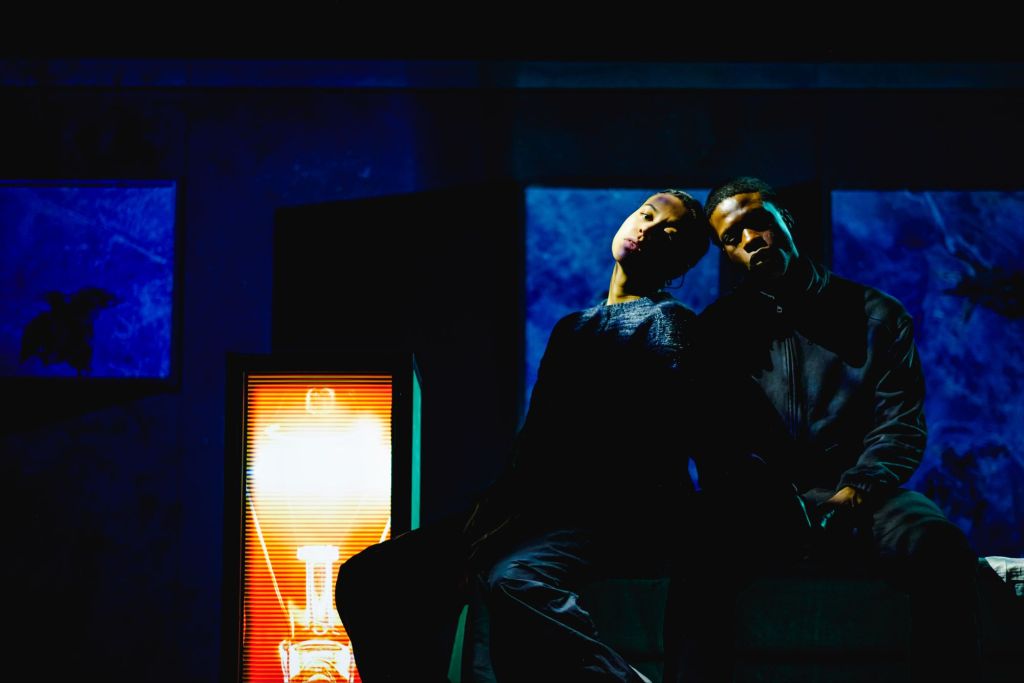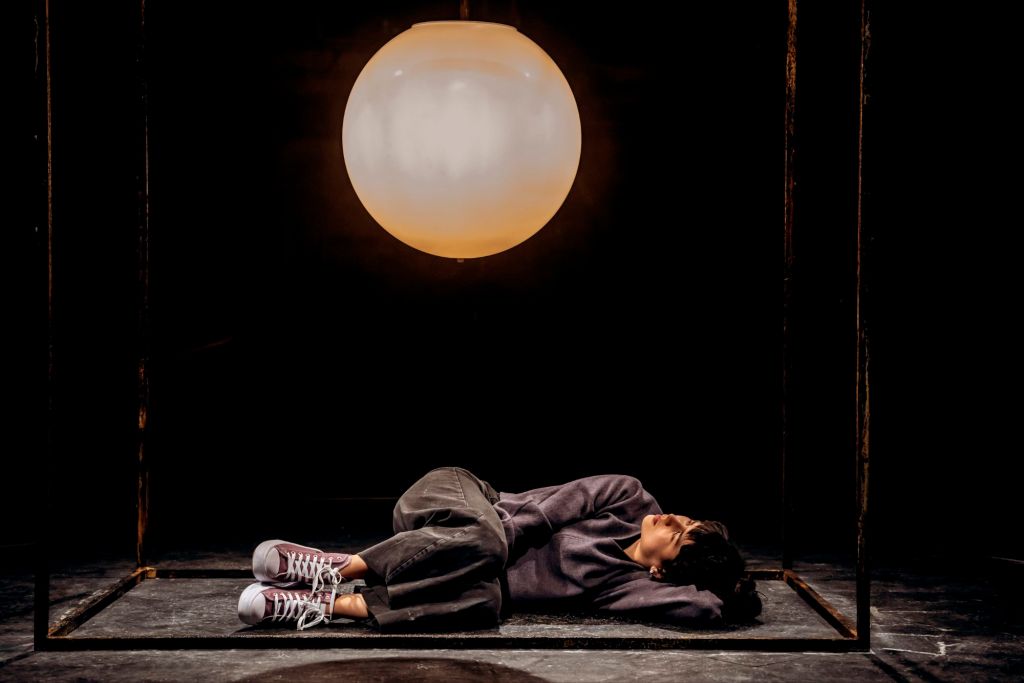
Written by Lynn Nottage
Directed by Jade Lewis
ROYAL EXCHANGE THEATRE
The ongoing cost of living crisis, the resurgence of strike action and current fears around the rise of AI in the creative industry is certainly having an impact on theatre productions across the North West. Currently Liverpool Everyman has The Legend Of Ned Ludd while the Royal Exchange Theatre has opted for a powerful piece by Lynn Nottage which was hailed by the New Yorker as “the first theatrical landmark of the Trump era” after it’s Broadway debut in 2017. SWEAT is a satisfyingly meaty production with strong performances all round that feels topical and relevant but Director Jade Lewis ensures never descends into earnest and preachy.
The play opens in 2008 with two young men attending their parole appointments. One is Aryan blond and boasts the facial tattoos of a white supremacist while the other is his apparent antithesis as a young black man carrying a bible. The play moves back in time to 2000 where we see these same young men are friends and workmates bonded from childhood through their mothers who are also lifelong friends and work colleagues all working in the same steel factory in Reading, Pensylvania. SWEAT zeroes in on the very human stories that emerge when huge economic changes rupture communities, destroy established industries and the resulting fissures rip through friendships and inflame racial prejudice.
The young men are truly their mother’s sons. Of German descent Tracey is a feisty widow whose tough belligerent nature has served her and her son well in the gritty environment of the shopfloor in a steelworks. Pooky Quesnel is utterly believable in this play where all the scenes and dialogue are very naturalistic. She moves from warm and loyal friend to embittered and brittle when for her a lifetime of identity tied up in the workplace fragments into opiod addiction as the steelworks cuts costs by moving its operation to Mexico. Cynthia played by Carla Henry is more measured and like her son, looks beyond the shopfloor and has aspirations for a brighter future.

Image credit: Helen Murray
The other characters give the production warmth and texture. An always excellent Kate Kennedy brings humour and pathos in equal measure as the beauty and local lush who also also works on the shopfloor but dreams of lost opportunities. Jonathan Kerrigan is the kindly bartender who was maimed in an industrial accident at the plant and whose measured views give perspective on this complex narrative. The young Columbian bartender is American born yet like his father cannot get a union card so will only get a foot in the factory door by stepping over the picket lines and with horrific consequences.
The staging by GOOD TEETH is minimalist but effective and the bar setting works well as the social epicentre for the workers to come together to celebrate birthdays and mourn losses and disappointments. The huge concrete blocks that occasionally sway precariously or emit showers of sparks are like an ominous sword of Damacles looming over the factory, it’s workers and indeed American democracy. The use of steel throughout the bar framework is also a neat allusion to the brooding presence of the steelworks.
SWEAT has a steely thread that runs through its narrative. Friendships and community cohesion are at the core of industry… when it thrives so do the people. When those making the big decisions in air-conditioned offices take a wrecking ball to the stability of local industry then those local communities are decimated. SWEAT is a searing indictment of poorly conceived economic decisions and casts a haunting spotlight on the human cost.











